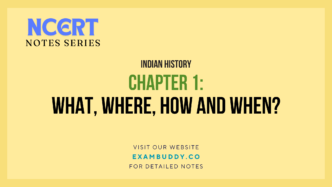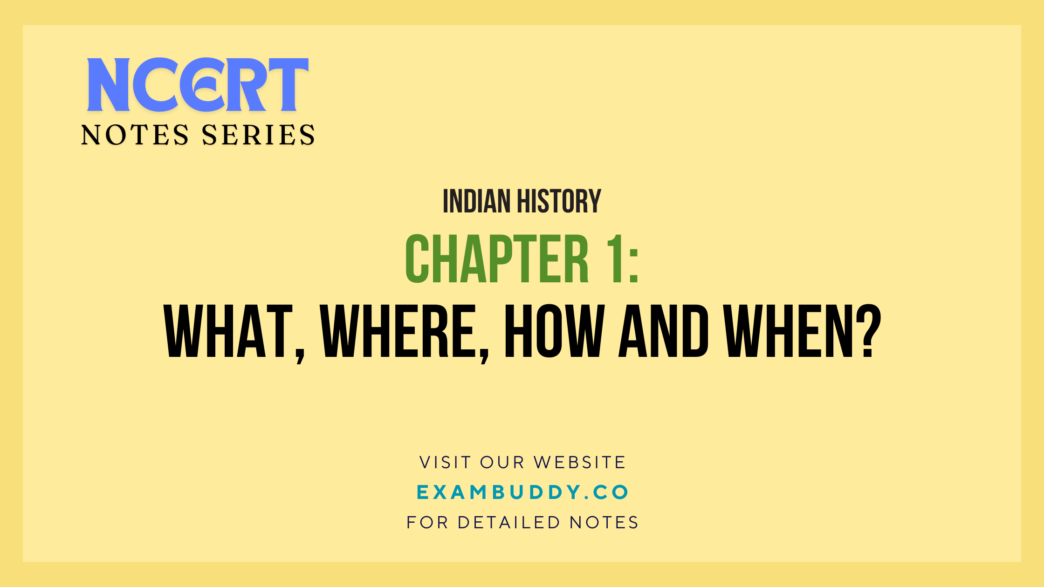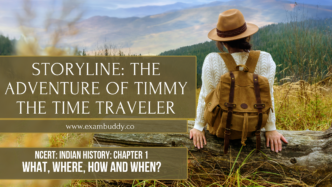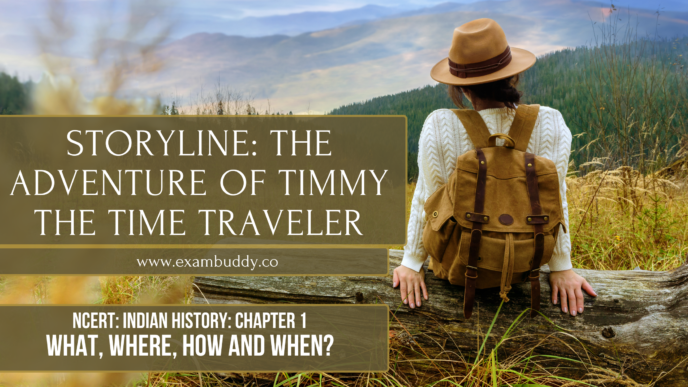1. Introduction to History
- Definition of History: The study of past events, particularly in human affairs.
- Importance of History: Understanding history helps us comprehend the present and shape the future.
Refer to the storyline for this chapter for fun understanding Click Here
2. Understanding History
- Key Questions in History:
- What: Refers to the events and facts of the past.
- Where: Involves the locations where events occurred.
- How: Explains the processes and methods through which events unfolded.
- When: Discusses the time periods of historical events.
Refer to the storyline for this chapter for fun understanding Click Here
3. Sources of History
- Primary Sources: Direct or firsthand evidence of historical events (e.g., artifacts, documents, diaries).
- Secondary Sources: Interpretations and analyses based on primary sources (e.g., history books, documentaries).
Refer to the storyline for this chapter for fun understanding Click Here
4. Important Concepts
- Chronology: The arrangement of events in the order they occurred. Understanding chronology is crucial for studying history.
- Timelines: A visual representation that helps in understanding the sequence of events.
Refer to the storyline for this chapter for fun understanding Click Here
5. The Story of Early Humans
- Early Human Societies:
- Early humans were hunter-gatherers who lived in small groups and moved in search of food.
- They used simple stone tools and lived in caves and open shelters.
Refer to the storyline for this chapter for fun understanding Click Here
6. Archaeological Discoveries
- Significance of Archaeology: The study of human history through excavation and analysis of artifacts, structures, and other physical remains.
- Key Sites:
- Bhimbetka (Madhya Pradesh): Rock shelters with prehistoric paintings that provide insight into the life and culture of early humans.
- Hunsagi (Karnataka): Evidence of stone tools and habitation.
Refer to the storyline for this chapter for fun understanding Click Here
7. Key Dates in Early History
- 2 million years ago: Emergence of early hominids.
- 300,000 years ago: Appearance of Homo sapiens.
- 10,000 BCE: Transition from hunting-gathering to agriculture, marking the beginning of the Neolithic period.
Refer to the storyline for this chapter for fun understanding Click Here
8. Historical Periods
- Prehistoric Period: The time before written records, divided into:
- Paleolithic (Old Stone Age): Characterized by the use of rudimentary stone tools and a nomadic lifestyle.
- Mesolithic (Middle Stone Age): Marked by advances in tool technology and the beginnings of settled life.
- Neolithic (New Stone Age): Associated with agriculture, permanent settlements, and the rise of complex societies.
Refer to the storyline for this chapter for fun understanding Click Here
9. Understanding Time
- Historical Time Measurement:
- Before Christ (BC): Refers to the years before the birth of Jesus Christ.
- Anno Domini (AD): Refers to the years after the birth of Jesus Christ.
- Era and Periodization: Dividing history into eras or periods (e.g., Ancient, Medieval, Modern) helps in organizing historical events.
Refer to the storyline for this chapter for fun understanding Click Here
10. Importance for UPSC Preparation
- Conceptual Understanding: A clear grasp of historical concepts, sources, and timelines is vital for history questions in UPSC exams.
- Interlinking Events: Understanding how different historical events are interconnected helps in answering complex questions.
- Cultural and Archaeological Significance: Recognizing the importance of archaeological sites in understanding human civilization is crucial for history-related topics.
Refer to the storyline for this chapter for fun understanding Click Here
11. Key Terms
- Archaeology: The scientific study of human history through excavation and analysis of artifacts.
- Chronology: The arrangement of events in the order they occurred.
- Artifact: An object made by a human being, typically an item of cultural or historical interest
Refer to the storyline for this chapter for fun understanding Click Here











